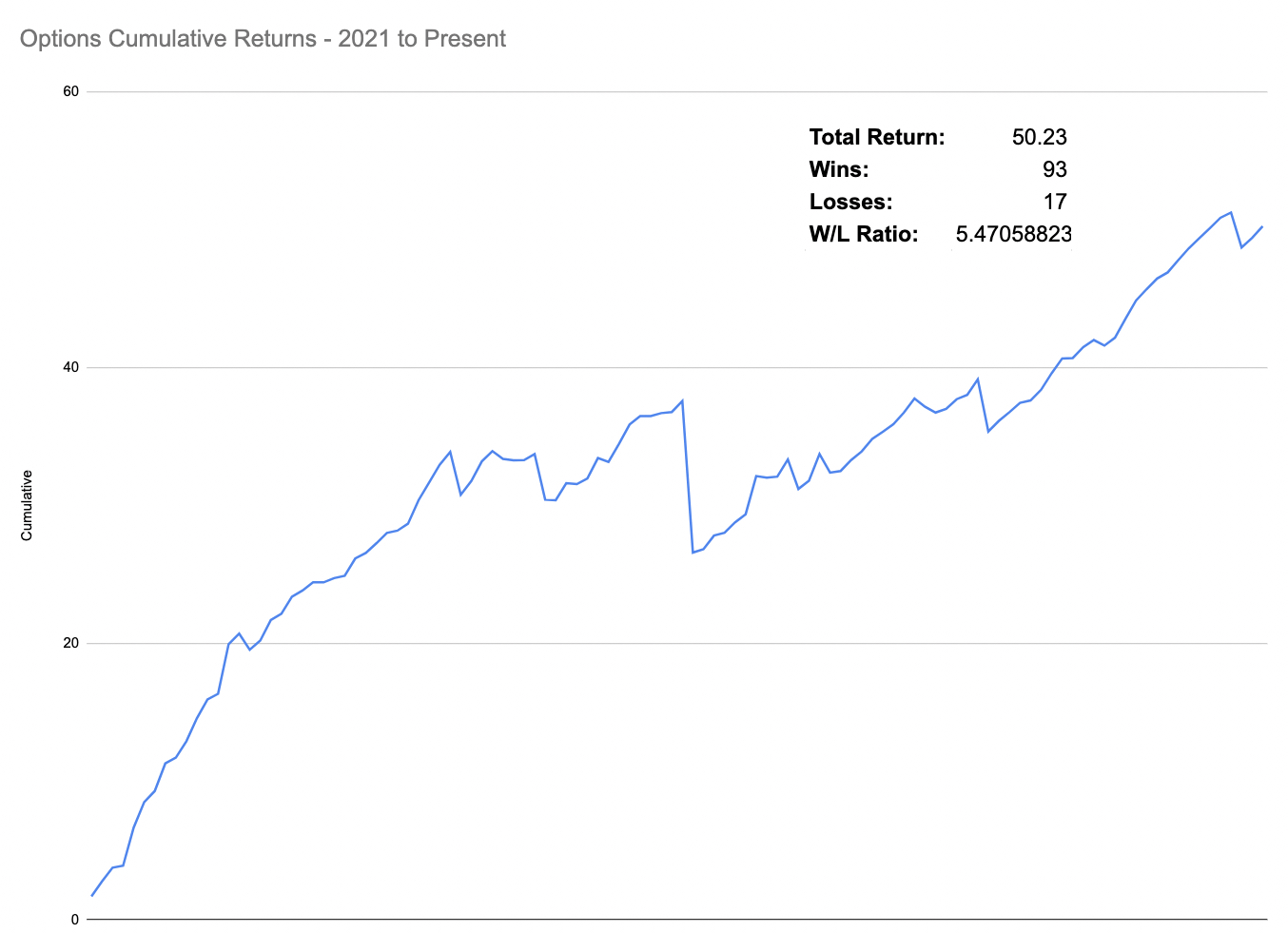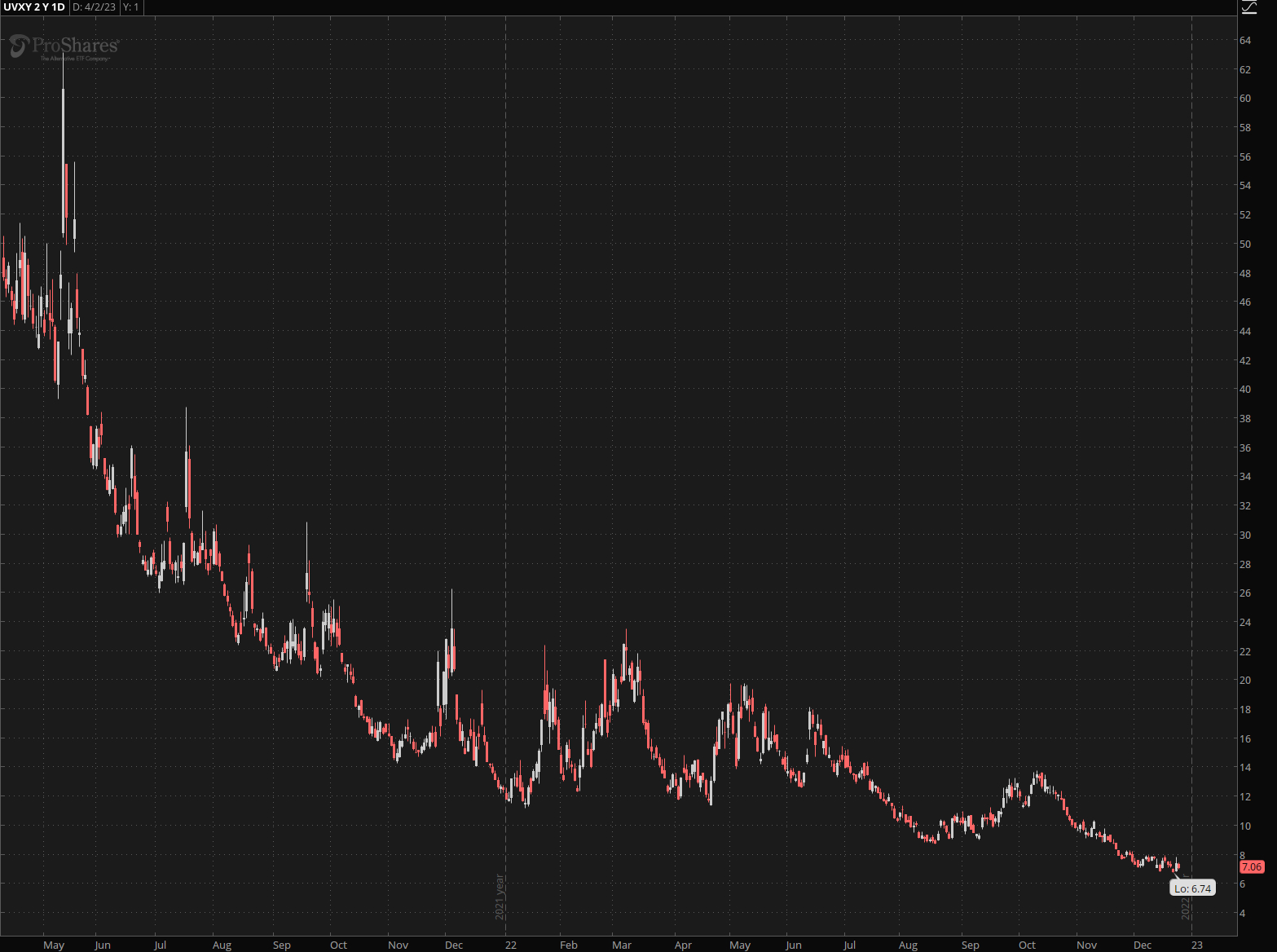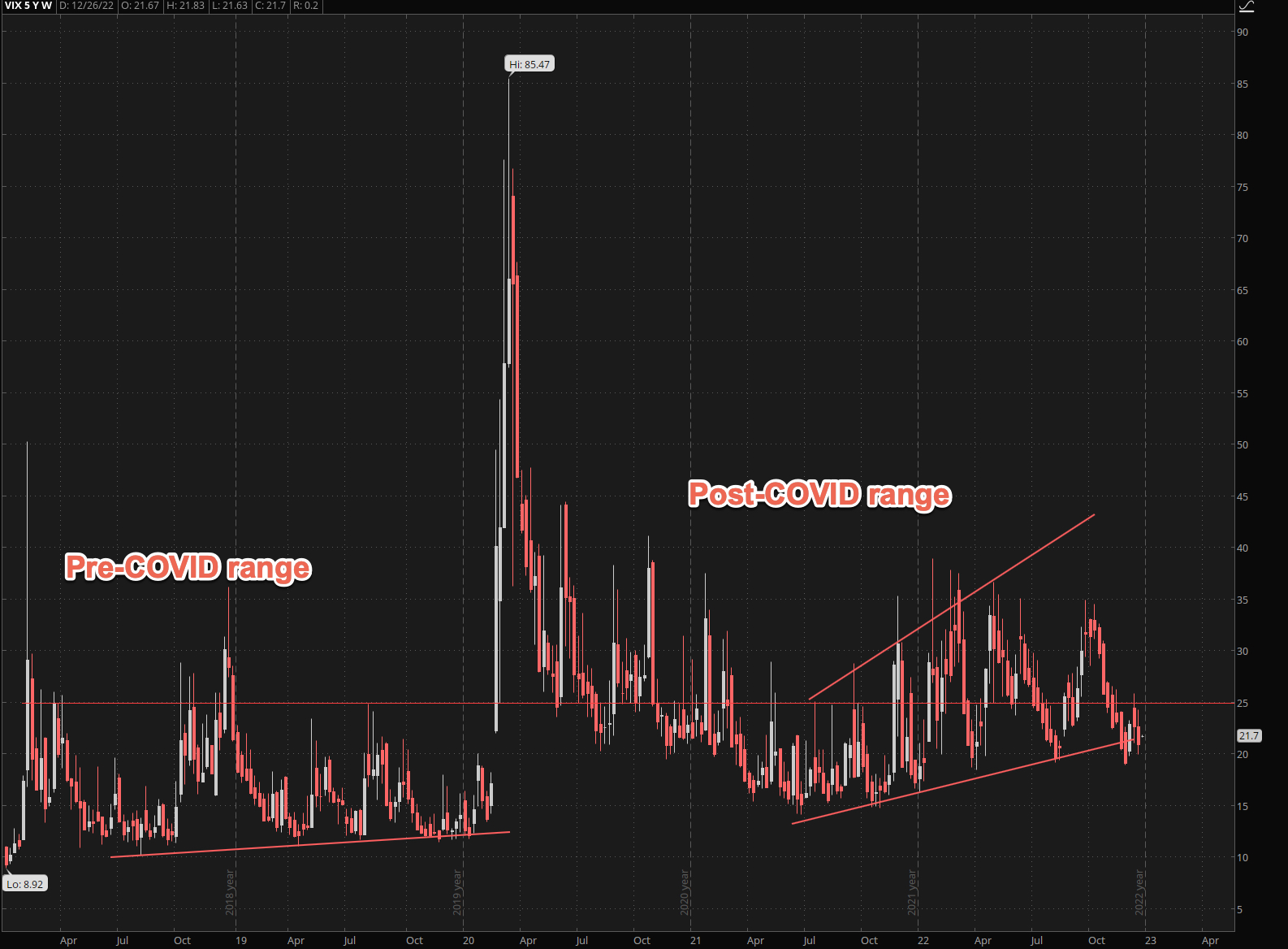In the world of trading and financial blogs it’s easy to get overrun with useless and outright false information. Over the years I have had many brushes with the turbulent world of prop trading, so I can tell you some secrets that pros know and retail traders only wish they knew. Until now!
The following essay is part of a comprehensive series I am posting over the course of the next few weeks in an effort to drive an 800 ton mining excavator through the mountain of mind trash that is preventing you from being a successful trader.

Rule #8: All traders should be trading volatility products (VXX, UVXY)
If you’re new to trading and wondering which stocks or options to trade, I recommend all new traders start with the exchange traded products (ETPs) based on implied volatility (IV) like for example the VXX, SVXY or UVXY.
These ETPs work by loosely mimicking the move of the CBOE’s VIX index. The VIX of course describes future expectation of volatility in the equities market. Or in plain English, it measures the collective level of fear of the market moving lower beyond one standard deviation.
For example, if the VIX drops to around 12.0, that is usually when the market is generally expected to be ramping higher in the near future. On the contrary, a violent drop in the stock market usually is accompanied by a VIX spiking to or above 25.
Caveat: What I just described are traditional long term implied volatility (IV) ranges. Since the 2020 COVID epidemic the 25 mark has transformed from a reversal threshold to a general median, a phenomenon that has remained for 2 full years now.
How volatility ETPs such as the UVXY work is by attempting to mimic the daily move in the VIX.
If the VIX is up 10%, these ETPs will typically be up about half of that. How these ETPs work is they hold VX futures contracts and it’s a bit complicated.
However what exactly makes them tick under the hood is not that important unless you’re a implied volatility geeks like us at Red Pill Quants.
What is important however is that 80% of the time, these ETPs lose money because of the way they are structured. This chart above shows it well.
Now here’s the one reason all traders should be trading implied volatility: once you understand some of the simple ways these ETPs work, the game is now rigged in your favor 65/35.
And I’ll take that trade any day of the week.
Looking at the chart, many traders immediately think “WOW! How the heck do I short that thing!”
Not so fast, son. That chart is a bit of a siren call.
Yes, there is a lot of profit to be made from trading volatility ETPs. But they are notorious for painting big moves up and thus they need to be traded with extreme care, which I cover in detail in my Volatility Trading Masterclass.
The important thing is that you DO NOT ever want to hold these ETPs short overnight. As most retail brokers have very restrictive rules around trading these ETPs it’s fortunately very difficult to hold these short overnight.
Love or hate it, your trading firm is protecting your butt from your ignominious demise.
And for good reason. It’s entirely possible that the VIX could more than double in a day or two. In fact if you look at the 3-year chart above you won’t have difficulty finding several occasions where the VIX doubled in a single day..
When – and not if – that happens you could possibly lose more than 100% of your trading capital. It’s happened back in 2018, it’s happened again in 2020, and it will likely happen again.
That means if you were short $25k worth of VXX, the value of that short position could spike up to $60k, meaning you’re on the hook for -$35k when your initial short position was only $25k.
Remember unlike with long trades, with a naked short position it’s possible to lose more than your initial investment. So not exactly a set and forget type of trade.
Another barrier to entry is that shorting volatility ETPs has become a crowded field. Lot of hedge funds are short these products. Which isn’t shocking, since it’s the easiest money they will probably make every single year.
Which means as a retail trader, the volatility ETPs VXX and UVXY are near impossible to borrow for trading short. Even at the professional level, they can be difficult to borrow for shorting.
Inverse volatility ETPs such as the SVXY and SVIX are the exception as they increase in value when the VIX falls.
This is why you do not EVER want to trade these ETPs short overnight and why you always want to be trading them via options. The options on these ETPs are usually liquid and a much safer way to play the volatility game.
In my time I have dug into some of the most bleeding edge research hedge funds have done on trading these ETPs. Without exaggeration I have probably spent 1000s of hours over many years developing trading systems based on key characteristics we identified across all of these volatility ETPs.
I’ve developed paint-by-numbers simple strategies that make trading volatility the simplest money you’re likely to make of all of your trading activity. Period.

If you’re looking for the Easy button of trading, look no further.
Speaking of which: Take advantage of our 2023 kick start super sale which offers a massive discount if you sign up for Red Pill Quants Unlimited for an entire year.
Not good enough for you?
Right now on this page ONLY for a few more days in 2022 you can lock in LIFETIME access.
That’s right, never pay us a single cent again and enjoy our premiere options trading service for the rest of your natural (or unnatural) life.
Awesome, right? But you can only get it on this page for a few more days, so lock in those savings while my temporary insanity lasts 😉

LIVE cumulative P&L of all my trades over the past year can be found here.
See you on the other side.


